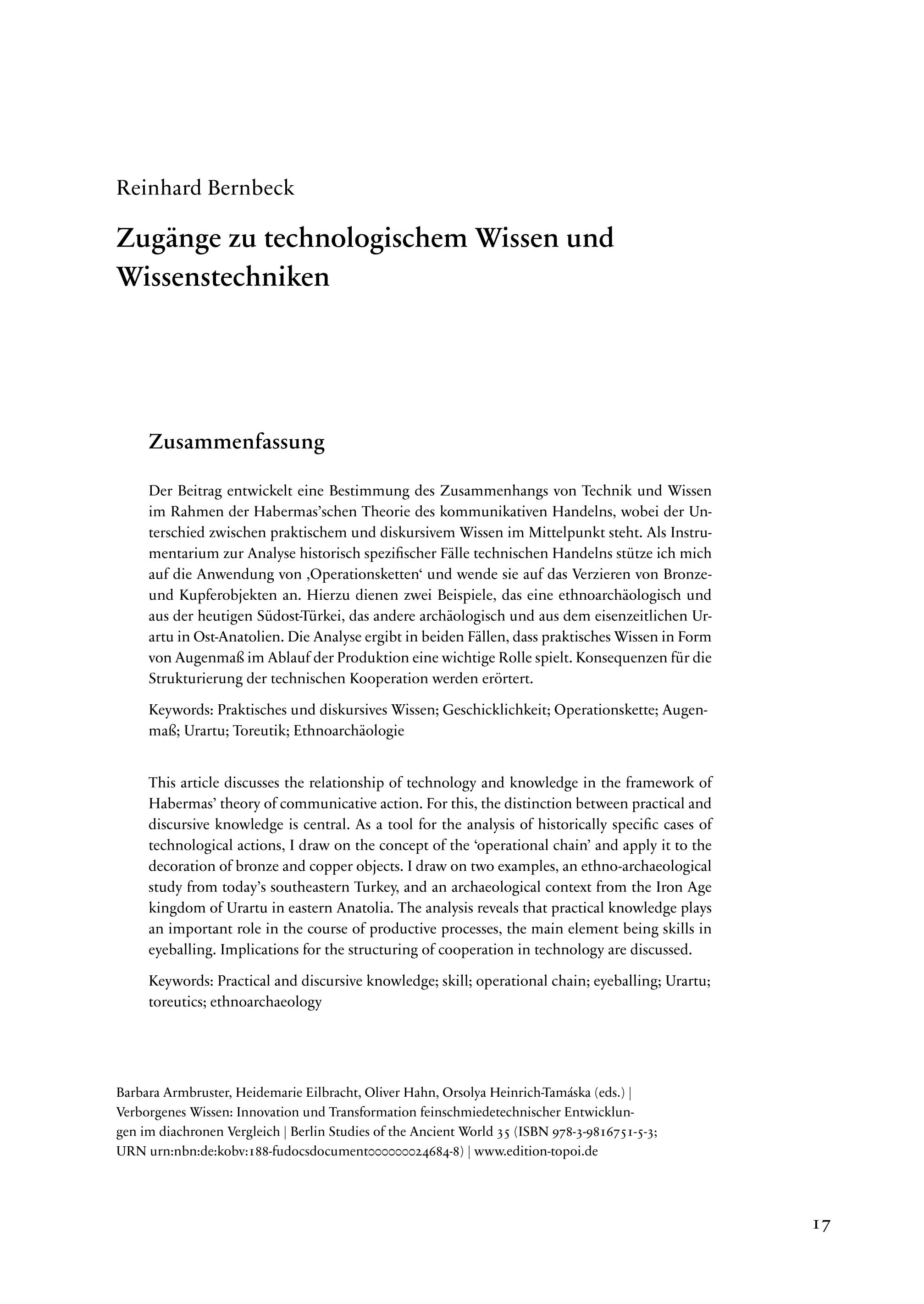Zugänge zu technologischem Wissen und Wissenstechniken
This article discusses the relationship of technology and knowledge in the framework of Habermas’ theory of communicative action. For this, the distinction between practical and discursive knowledge is central. As a tool for the analysis of historically specific cases of technological actions, I draw on the concept of the ‘operational chain’ and apply it to the decoration of bronze and copper objects. I draw on two examples, an ethno-archaeological study from today’s southeastern Turkey, and an archaeological context from the Iron Age kingdom of Urartu in eastern Anatolia. The analysis reveals that practical knowledge plays an important role in the course of productive processes, the main element being skills in eyeballing. Implications for the structuring of cooperation in technology are discussed.
Der Beitrag entwickelt eine Bestimmung des Zusammenhangs von Technik und Wissen im Rahmen der Habermas’schen Theorie des kommunikativen Handelns, wobei der Unterschied zwischen praktischem und diskursivem Wissen im Mittelpunkt steht. Als Instrumentarium zur Analyse historisch spezifischer Fälle technischen Handelns stütze ich mich auf die Anwendung von ,Operationsketten‘ und wende sie auf das Verzieren von Bronze- und Kupferobjekten an. Hierzu dienen zwei Beispiele, das eine ethnoarchäologisch und aus der heutigen Südost-Türkei, das andere archäologisch und aus dem eisenzeitlichen Urartu in Ost-Anatolien. Die Analyse ergibt in beiden Fällen, dass praktisches Wissen in Form von Augenmaß im Ablauf der Produktion eine wichtige Rolle spielt. Konsequenzen für die Strukturierung der technischen Kooperation werden erörtert.

